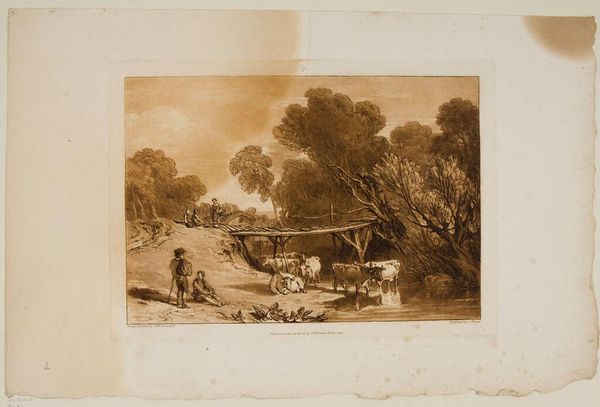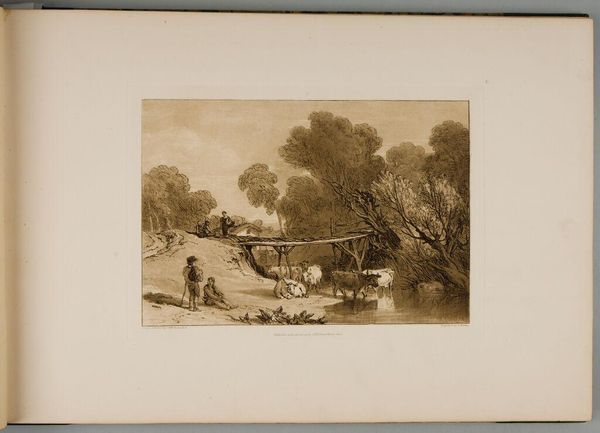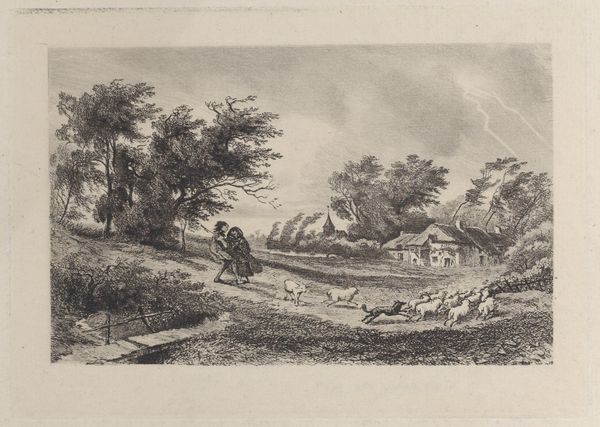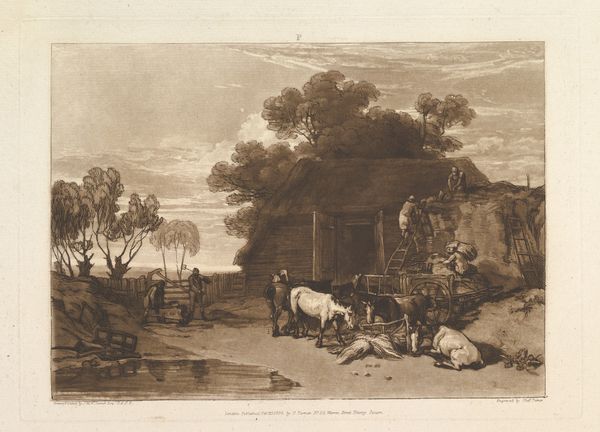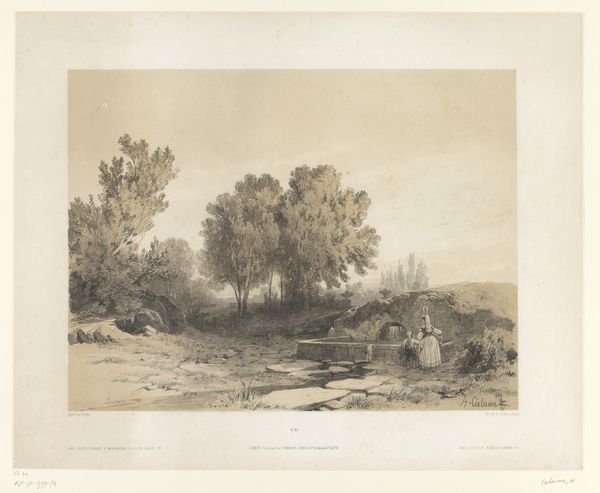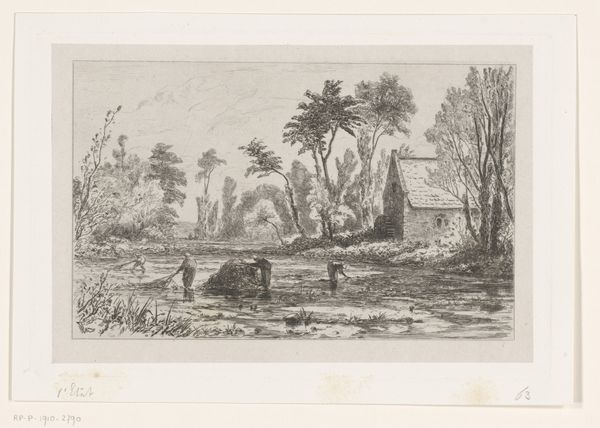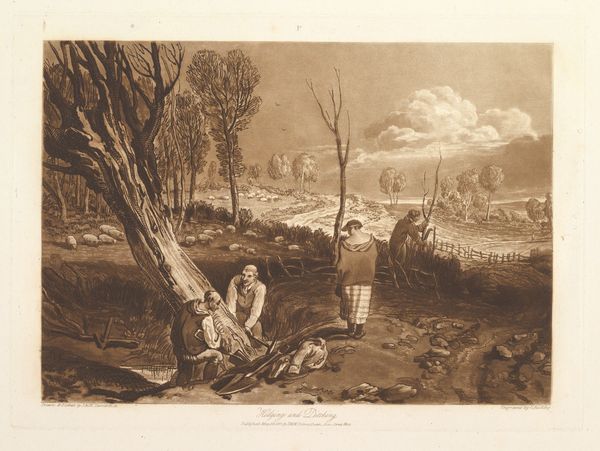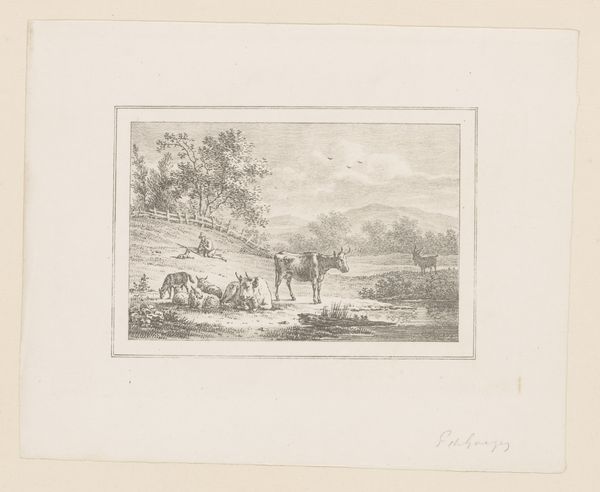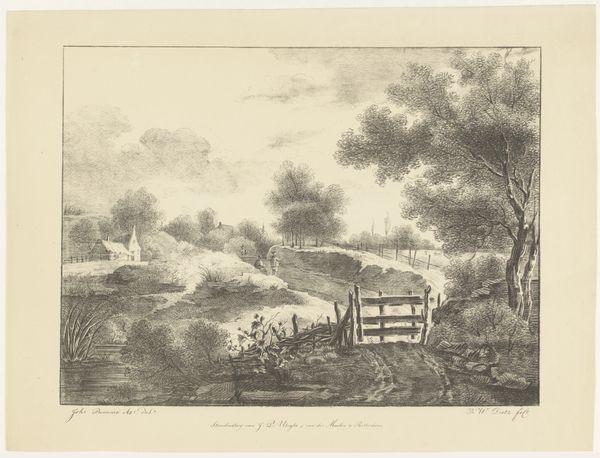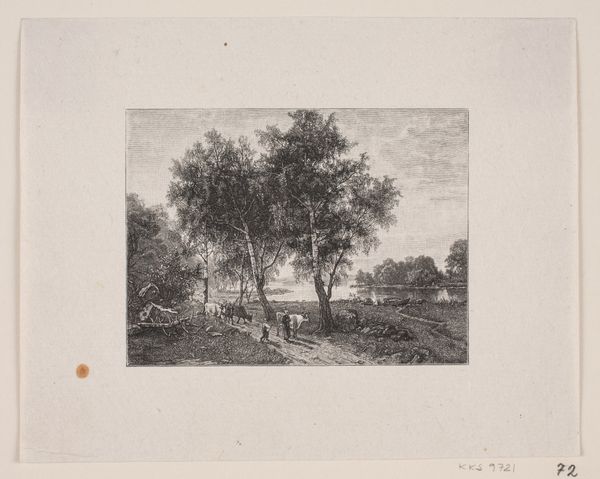
Bridge and Cows, plate 2 from Liber Studiorum Possibly 1807
0:00
0:00
drawing, print, etching, paper
#
drawing
#
16_19th-century
# print
#
etching
#
landscape
#
charcoal drawing
#
paper
#
romanticism
#
genre-painting
#
charcoal
#
realism
Dimensions: 182 × 263 mm (image); 208 × 288 mm (plate); 287 × 383 mm (sheet)
Copyright: Public Domain
Editor: This is “Bridge and Cows,” a print by J.M.W. Turner, possibly from 1807. It's etching on paper, and it’s currently held at the Art Institute of Chicago. The scene has this really serene, almost idyllic quality – very pastoral, if that makes sense. What social commentaries can be said to go with such landscapes? Curator: I’d argue Turner’s work in "Liber Studiorum," including this etching, participates in a fascinating dance between celebrating the idealized countryside and subtly critiquing the socio-economic shifts reshaping British society at the time. He published this as Britain faced radical shifts in power - from a monarchy to industrial forces. This also represents how the "genre-painting" tag applies within landscape since it emphasizes figures or other subject matter that tells its viewer of life around such work. It begs us to think about to what end are we really creating beauty? What’s not there that Turner is refusing to focus on? Editor: I never thought about it that way! So, you're saying it’s more than just a pretty picture of cows by a stream. It's also commenting on urbanization and power? Curator: Precisely. The composition itself reinforces this tension. What do you notice about the scale of the figures in relation to the landscape, or the placement of the bridge itself? How does that compare with his earlier landscapes or seascapes? Editor: Now that you mention it, the figures are quite small and the bridge looks kind of precarious compared to the looming trees and open sky. It feels…deliberate. Maybe like nature is more powerful? Curator: Exactly. And what would it have meant at that period, or perhaps today? That's where we see what may be his lasting effects of powerful, yet romantic social commentary. Editor: This print, then, feels like more of an invitation to think critically about how we frame the past and present and the societal factors for the public. Curator: Agreed! These observations help frame our modern lens of its implications throughout time.
Comments
No comments
Be the first to comment and join the conversation on the ultimate creative platform.

